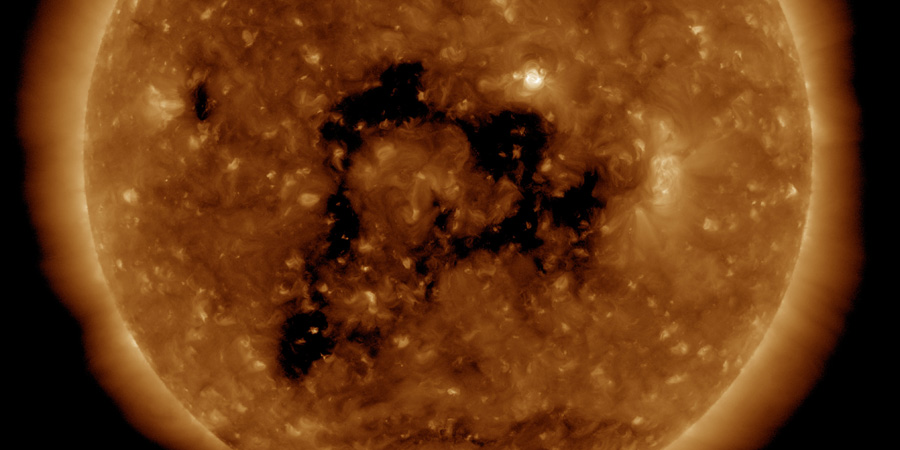Coronal hole faces Earth
Tuesday, 1 January 2019 15:37 UTC

Happy New Year everyone! We are starting of 2019 with some pleasant space weather news! A coronal hole is facing our planet today and sending a high speed solar wind stream towards our planet!
For those of you that follow us on Twitter or have the SpaceWeatherLive Android or iOS app installed you likely recieved an automated coronal hole detection alert this night:
A transequatorial coronal hole is facing Earth. Enhanced solar wind could arrive in ~3 days. Follow live on https://t.co/bsXLidnzGh pic.twitter.com/rdV3aRYUja
— SpaceWeatherLive (@_SpaceWeather_) December 31, 2018
Like most coronal holes, this is not a new coronal hole. In fact, if we compare this coronal hole with how it looked like during the previous rotation we do see that it decreased in size. Not a great sign of course but the best way to get an idea of what to expect is to look at the solar wind data recorded at STEREO Ahead.
STEREO Ahead is a space craft watching the Sun from the side (left side of the Sun as seen from Earth) and does not only takes images of the Sun, it also records solar wind conditions like DSCOVR does just in front of Earth. STEREO Ahead recorded solar wind speeds of about 600km/s when the solar wind stream from this coronal hole passed it. The total strength of the IMF topped at almost 15nT with a maximum southward deflection (Bz) around -10nT but this did not last that long.
The solar wind stream will likely arrive late on Thursday (3 January) or early on Friday (4 January) and if we see similar conditions at Earth as we did at STEREO Ahead, we could expect active geomagnetic storm conditions which stands for a Kp value of 4. Minor G1 geomagnetic storm conditions seem unlikely with those kind of numbers but we should not rule it out completely. A decent way to start of the new year we think!
Thank you for reading this article! Did you have any trouble with the technical terms used in this article? Our help section is the place to be where you can find in-depth articles, a FAQ and a list with common abbreviations. Still puzzled? Just post on our forum where we will help you the best we can!
Latest news
Latest forum messages
Support SpaceWeatherLive.com!
A lot of people come to SpaceWeatherLive to follow the Sun's activity or if there is aurora to be seen, but with more traffic comes higher server costs. Consider a donation if you enjoy SpaceWeatherLive so we can keep the website online!

Space weather facts
| Last X-flare | 2025/01/04 | X1.85 |
| Last M-flare | 2025/01/22 | M1.3 |
| Last geomagnetic storm | 2025/01/04 | Kp5 (G1) |
| Spotless days | |
|---|---|
| Last spotless day | 2022/06/08 |
| Monthly mean Sunspot Number | |
|---|---|
| December 2024 | 154.5 +2 |
| January 2025 | 145.8 -8.7 |
| Last 30 days | 161.9 +43 |


